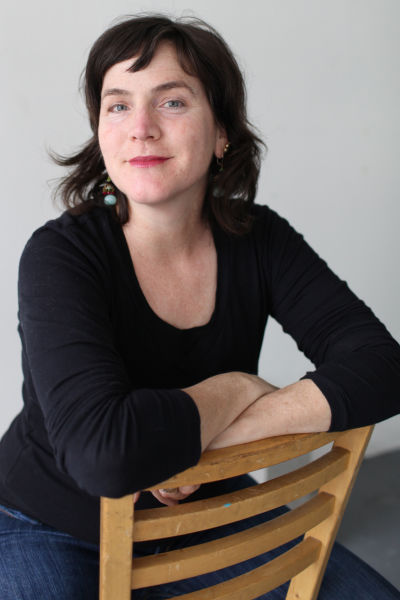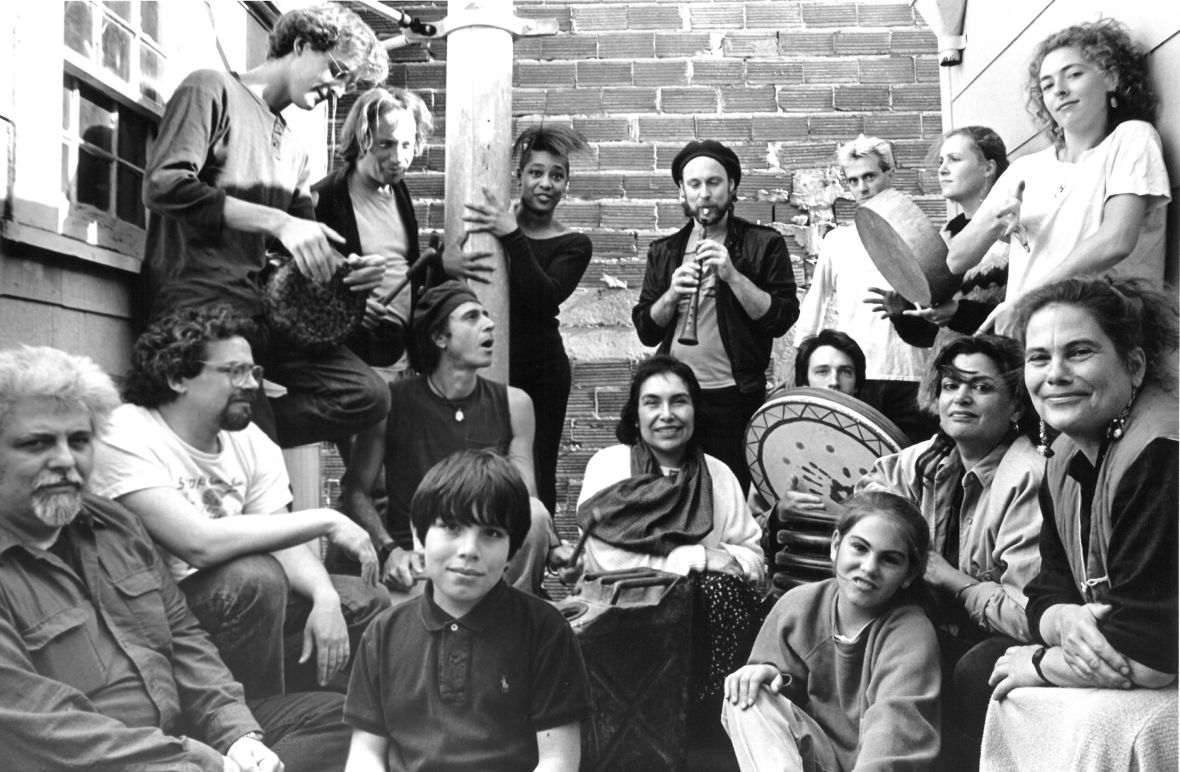“Like time travelers, archivists don’t mess with what they find,” Lexa Walsh tells me.
We stand in a room, unremarkable except that it’s filled with archival boxes, stacks of papers and piles of outdated posters. Interdisciplinary Oakland-based artist Walsh has been invited to curate The Archive Show for the 50th anniversary of the nonprofit Intersection for the Arts. “When I agreed to do this, my condition was, ‘As long as I can tell a truthful story.’”
Intersection, which began in 1965 as a church-sponsored, conscientious objector-staffed, alternative arts center, offers visual and performative art programming as well as a robust fiscal-sponsorship program for artists. The task of encompassing 50 years of a prolific multidisciplinary arts organization is an unruly one — even when the records are meticulously labeled. Truthfully, each discipline (literature, visual arts and performative arts) has enough material to host its own archive show. The theater troupe Campo Santo alone has 17 years’ worth of posters and ephemera in the archives.

Inside over 200 boxes, Walsh scrounged for treasures buried in newsletters, board meeting memos and long-obsolete analog media.
“The point of the show is to show the volume of content, both physical and ephemeral,” Walsh comments, noting that the past 10 years at Intersection demonstrate a marked decline in paper material. “I’m a real proponent for all of us in our daily lives to make material culture. You don’t know if that JPEG will be readable in 10 years.”
Walsh strategized to feature the material presence of the archives themselves as part of the exhibition. The boxes will be featured as a sculptural element, and Walsh made wallpaper from the archival database text. The exhibition will have displays for each different discipline, and sections for reading, watching, and listening to archival material and media. Functioning as an active, participatory archival tool, the exhibition will include recording stations provided by StoryCorps, and a Walsh-designed postcard for written documentation, so that members of the community can contribute their own memories of Intersection over the years.

One of the more recent and highly publicized events for Intersection was last year’s fiscal crisis. The organization restructured drastically, including staff lay-offs and programming cutbacks. Yet when Walsh dug through decades-old memos from board meetings and newsletters, she stumbled upon a surprising fact: Last year’s fiscal crisis was not the first. Four others occurred in the past.
“In the exhibition, I have a timeline of the fiscal crises of Intersection, and that’s the only timeline included,” says Walsh. “[Facing closure] is almost a fact of life for most non-profits. It’s important to share that this has happened before, practically every 10 years.”
Presenting this somber side of an institution’s story isn’t a sensationalist gesture, but rather a way of acknowledging the people who have struggled — and succeeded — to keep Intersection afloat. And that’s something that an archive reveals in a unique way.
“The humanity of an organization is revealed in the archives. All that labor becomes invisible when you only get to look at a marketing piece, or even in an artwork or performance. I want to show the labor that went into generating all that artistic content over the years and to showcase the duration of this organization, despite all of these crises.”
Delving so deeply into the history of Intersection, which is inevitably a history of the Bay Area arts community, Walsh is also thinking critically of the present and future.
“I’m fearful for the future,” she admits. “San Francisco used to be a special place where you could be inventive and make anything happen. That has changed. I really worry about the small institutions.”






